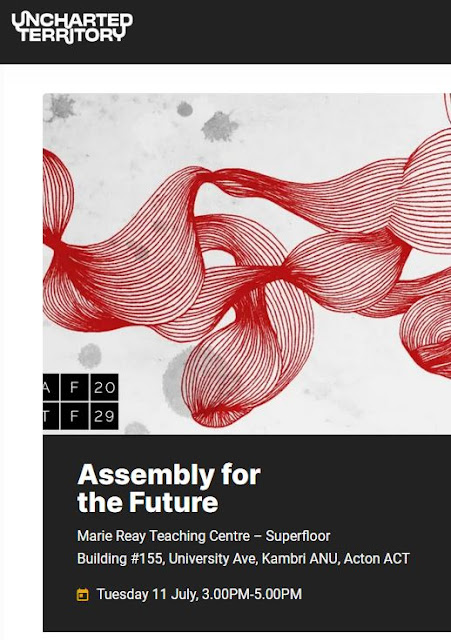Amadeus by Peter Shaffer. Canberra REP Theatre July 27 – August 12, 2023.
Reviewed by Frank McKone
Opening Night July 28
CREDITS
Director • Cate Clelland
Assistant Director • Ian Hart; Assistant to the Director • Rosemary Gibbons
Stage Manager • Ewan; Stage Crew • Kristen Seal
Set Designer • Cate Clelland; Set Coordinator • Russell Brown OAM
Set Construction & Painting • Russell Brown OAM, Gordon Dickens, Andrew Kay, John Klingberg, Brian Moir, Eric Turner; Properties • Brenton Warren
Costume Designer • Deborah Huff-Horwood
Wardrobe Coordinator • Jeanette Brown OAM
Costume Makers • Cheryll Bowyer, Jeanette Brown OAM, Suzan Cooper, Anne Dickens, Helen Drum, Ros Engledow, Rosemary Gibbons, Rhana Good, Deborah Huff-Horwood, Jenny Kemp, Ann Moloney, Kristen Seal, Anna Senior OAM, Anne Turner, Joan White
Lighting Designer • Nathan Sciberras; Lighting Operators • Leeann Galloway, Deanna Gifford, Leanne van der Merwe, Ashley Pope
Sound Designer • Neville Pye; Fortepiano recordings • Christine Faron, Justin Mullins
Ghosts of the Future original composition • Ewan
Sound Operators • Leo Mansur, Lawrence Mays, Neville Pye, Disa Swifte
CAST
Antonio Salieri • Jim Adamik
Wolfgang Amadeus Mozart • Jack Shanahan
Constanze Weber, wife to Mozart • Sienna Curnow
Joseph II, Emperor of Austria • Neil McLeod
Count Johann Killian von Strack • David H Bennett
Count Franz Orsini-Rosenberg • Tony Falla
Baron Gottfried van Swieten • Ian Russell
The 'Venticelli' • Michael J. Smith, Justice-Noah Malfitano
Katherina Cavalieri • Harriet Allen
Citizens of Vienna • Charlotte Edlington, Grace Jasinski
Blair Liu, Kelly McInnes, John Whinfield, Joan White
The
list is long, emphasising the value of having our Canberra Repertory
Theatre Society, putting on such a quality production of Amadeus 'loved by God' – Peter Shaffer’s historical fiction study of what may have been the relationship between two composers: Johann Chrysostom Wolfgang Amadeus Mozart, (actually baptized without ‘Amadeus’), born January 27, 1756, Salzburg, died December 5, 1791, Vienna; and Antonio Salieri, born August 18, 1750, Legnago, Republic of Venice, died May 7, 1825, Vienna.
Just
their names suggest fascinating differences between an over-the-top
bumptious scatter-brain child prodigy German and a standard career
oriented God-bothering Italian court composer – or at least that’s how
Shaffer’s Salieri sees Mozart.
His problem was true to
history. Though Salieri’s operas were solidly supported in official
European circles in his lifetime, Shaffer says Salieri knew in his heart
that Mozart’s upstart brilliance was God-given. The point was that
Salieri lived long enough after Mozart’s early 1791 death to see
that brilliance grow into the musical force that we understand still
today; while Salieri’s music was already outshone, even by Rossini(!),
by 1825.
But the play is not simply a story of 18th
Century court intrigue and competition between composers. Jim Adamik
creates perhaps his best in-depth character yet, in a tour de force
charismatic presentation of Salieri. The production depends on his
commanding leadership in the role, and he leads with an assured strength
– making us able to believe, in a truly empathetic way, in the sense of
injustice and confusion in Salieri’s mind. God should have known
better, and made sure his work would shine eternally, rather than
Mozart’s – yet he could not avoid the truth. Though he was duplicitous
in keeping up his social standing at court, we can almost feel sorry for
him.
And herein is the strength of Shaffer’s play. The truth is
the truth, whatever else we personally would like it to be. If only
people in power around the world today could accept that, we might even
save the Earth, from ourselves.
Canberra REP has done us proud,
in Cate Clelland’s directing and in everyone’s obvious enthusiasm in the
often amusing yet telling acting style, the set design (including
terrific backdrop photos), the music recording, lighting and sound, with
special mention of Jack Shanahan and Sienna Curnow in their wonderfully
uninhibited playing of Mozart and his wife Constanze, as well for the
amazing beautiful 18th Century costumes and hairstyling.
Here’s another REP production not to be missed.
© Frank McKone, Canberra




















